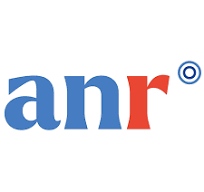ANR CLIP- (Cohesive LIPschitz)
This research project, funded by the French National Research Agency (ANR), is part of an International Collaborative Research Project (PRCI) between the team of Professor Jean-François Molinari from the École Polytechnique Fédérale de Lausanne (EPFL) and the team of Professor Nicolas Moës from GeM at Centrale Nantes. The project focuses on the modeling of space debris formed by the dynamic fragmentation of satellites (see Figure 1).

Figure 1: Artist view of space debris. Taken from https://www.ipsa.fr/blogs/2021/02/conference-debris-spatiaux/ for the conference of Christophe Bonnal, CNES, at IPSA engineering school on March 4th 2021.
Dynamic fragmentation is a complex mechanical phenomenon by which a material or structure is broken down into debris. It can occur following an explosion, impact or simply the application of large forces. Extreme loads create non-linearities in the material, leading to the rapid propagation of cracks, which branch out, fuse with each other and produce fragments. This process is accompanied by wave propagation within the structure and repeated contact between moving debris. From the point of view of numerical modelling, the large number of cracks and the complexity of their geometry require robust computational methods, enabling accurate results to be obtained in a reasonable time.
One of the aims of the project, led by the Centrale Nantes team, is to develop a new approach to modeling cracking, called “CLIP”, for “Cohesive Lipschitz”. The EPFL team has significant experience in modeling dynamic fragmentation using the cohesive zone model (CZM), and has already obtained significant results [1,2,3]. However, these results highlighted a mesh dependency of the cracking paths obtained by cohesive zones. At Centrale Nantes, the Lip-field approach developed a few years ago is beginning to show promising results in the regularization of continuous damage models, but has so far only been applied to relatively simple dynamic problems [4,5,6]. The idea of the CLIP approach is to apply some of the concepts of the Lip-field approach to cohesive zone models in order to obtain mesh-independent results.

Figure 2 : Generation of diverse fragment sizes and shapes due to the explosion of a ceramic dome (one eight of the geometry is represented). The HPC CZM simulations generate impressive data on fragment sizes, but the crack paths depend on the local mesh details. Results obtained by the EPFL team
[2].
Members of the project :
- GeM – Centrale Nantes :
- Nicolas Moës
- Nicolas Chevaugeon
- Hugues Digonnet
- Benoît Lé
- PhD student : Sachin Shetty
- EPFL
- Jean-François Molinari
- Guillaume Anciaux
- Nicolas Richart
- PhD student : Thibault Ghesquière-Diérickx
Dates :
September 2023 to September 2027
[1] S. Levy, J. F. Molinari, I. Vicari, and A. C. Davison. “Dynamic Fragmentation of a Ring: Predictable Fragment Mass Distributions”. In: Phys. Rev. E 82.6 (2010), p. 066105. [2] M. Vocialta, N. Richart, and J.-F. Molinari. “3D Dynamic Fragmentation with Parallel Dynamic
Insertion of Cohesive Elements”. In: Int. J. for Num. Meth. in Eng. 109.12 (2017), pp. 1655–1678.
[3] M. Pundir and G. Anciaux. “Coupling between Cohesive Element Method and Node-to-Segment Contact Algorithm : Implementation and Application”. In: Int. J. for Num. Meth. in Eng. 122.16 (2021), pp. 4333-4353. [4] N. Moës and N. Chevaugeon. “Lipschitz regularization for softening material models: the Lip-field approach”. In: Comptes Rendus. Mécanique 349.2 (2021), pp. 415–434. [5] N. Chevaugeon and N. Moës. “Lipschitz regularization for fracture: the Lip-field approach”, In: Comp. Meth. in App. Mech. and Eng.(2022), p. 115644. [6] N. Moës, B. Lé, and A. Stershic. “Fragmentation analysis of a bar with the Lip-field approach”. In: Mechanics of Materials (2022), p. 104365.


